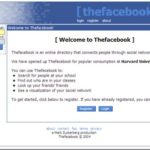Time to talk rather than relying on data

In this age of high technology, it’s easy to concentrate on the amazing data available about consumers, but Rachel Bevans explains the benefits of a good old fashioned chat.
Data is invaluable. In today’s world, we have the benefit of increasingly detailed data at our fingertips.
Our ability to identify customers individually and track their behaviours gives us information about their buying habits, reading/viewing/listening habits, decision-making processes and interests. We have sales value and volume, brand performance and customer satisfaction data. We have access to category and competitor information, macro environment information and market trends. We have employee retention data, engagement daily pulses and employee satisfaction data.
From our pools of quantitative research conducted with representative samples and data on individual customers and employees, we can build a very solid picture of our customers and employees, their relationship with our brand vs competitors and how it links to performance.
So why spend time talking to people?
Shedding light on data
Not all businesses do collect and/or pay for all the data sources available. Budgets and people resource prevent them from doing so.
Many of those that do, collect data but don’t do anything with it. A report is completed and filed away in the bottom drawer, without issues, insights and implications drawn out.
And if the objectives for collecting and analysing the data are not clear, even if they are, it is easy to get lost in the data, down the rabbit hole, analysis paralysis, hindering vs helping decisions being made and actions being taken.
Whilst it would be wonderful to start with utopia – actionable data that has been collected with a purpose; qualitative research informing attributes measured; a dashboard showing key performance indicators; issues, insights and implications brought to the surface – looking at existing data through the eyes of the consumer or employee can really help shed light on what you’re looking at and for. Talking to even a couple of people and revisiting the data can open up new issues, insights and opportunities you may not have seen before.
Understanding Why
Understanding WHAT people are doing is a good start, but understanding WHY they’re doing it is the key to unlocking a truly powerful insight that resonates with and connects people to your brand. It shows empathy to customers and employees, which strengthens the connection. And it enables you to join the dots, where you don’t have the answers in black and white.
Instinct
Professionals who have not always had access to data tend to develop a better instinct for what works for their customers and employees – for knowing when the information doesn’t seem quite right or when they’re faced with making decisions without full or any information.
Objectivity
Even the most conscientious, least judgemental professional will project their own perceptions, experiences and feelings upon a situation. Let alone those who are less aware of what they’re doing. And the fact is, many consumers and employees aren’t like you. By getting in front of customers and employees, you have an image in your mind. Even one person in your target market who is different to you can help balance your views on the world and make more rounded decisions.
Put a face to a name and number
Beyond the numbers, social media networks can provide a great tool for asking questions of your consumers. But it’s not the same as seeing them face-to-face. Expressions and body language tell a lot of the story and enable you to ask and understand more. And you’ll have those faces to remember when you’re next making decisions that affect your customers and employees.
All talk. All action.
There are a number of ways to get your employees in front of customers and other employees:
- Build profiles of target customer and employee audiences – with qualitative insights around values and motivations as well as quantitative data, bring them to life with imagery or film and couple with interviews with real customers
- Encourage people across your business to meet customers and other employees and ask them questions to understand what’s important to them and why, their perceptions of and experiences with your brand – provide them with the process and tools to make it happen
- Simply take a turn at serving customers – to understand what goes on for the employee’s and customer’s experience
- Co-creation with customers and employees – for positioning and proposition development, customer journey mapping, new products and services ideation
- Be your customer – hang out where they hang out, read what they read, buy what they buy
- Qualitative research – conduct qualitative research with customers and employees and enable employees to watch
Imagine the difference it would make to your business if every employee talked to one customer once a year, or at least observed one qualitative research session. Is your business data centric or people centric?
Rachel Bevans is strategist, researcher and business director, with over 28 years’ experience helping organisations become brand-driven, customer-centric and employee-engaged. Rachel founded The Healthy Brand Company in 2012 to unite her brand experience, passion for health and wellbeing and curiosity about what motivates people.







